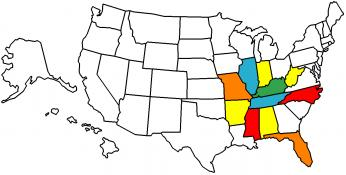First things first...
1. I'm removing the tank (which has some light interior rust) and cleaning it. I've had several suggestions on methods for doing this and any other opinions or things to watch out for would be great.
2. I still have to remove the rear mounts for the luggage. I noticed it's mounted behind the top mount for the shocks. At least the top part of the shock will need to be pulled loose in order to remove the mounts. What will happen when I do this? Am I in for any surprises or pitfalls?
3. Gas is leaking from carb #4 with the petcock ON and engine not running and hardly any gas in the tank. I realize a carb rebuild is in order, and I'm sure I can do it, but i'd like to get a little more experience before I start this process.
4. Oil is leaking from the gasket on the left side engine cover. I guess it's called the engine cover... it's the big one that has the Suzy stamp on it. Any resources out there that give detailed info on the actual technical terms for each of these common parts? As in more than "this the clutch lever, these are the handle bars, this is a wheel" but more about the engine and tranny and shaft stuff? I need to get my terminology up to speed... again.. any pitfalls I should expect here? Anything else to look for when this cover comes off?
Background of the bike... 26K miles and has sat garaged for about 2 years. It runs and sounds great on starting but the battery is dead and there was only a tiny bit of gas in it, so I don't know how well it runs. I haven't bothered putting fuel in it since I would rather start the cleaning process first anyway. No doubt I'll discover other issues along the way. i'll also need to make decisions about headlamps and rear turn signals, but since it won't be on the road for a good while, I can deal with that much later.
So... as a newbie with extremely limited funds but a whole lot of time... which projects would you suggest I begin first? Or simultaneously? Or to look for xxx while I'm doing xxx? Be sure to also change the xxx while doing xxx?
I'd have broken all of these questions down into separate smaller posts, but mostly what I want to get at right now is which things are best/easier to start with! THANKS!!
.png)


Comment